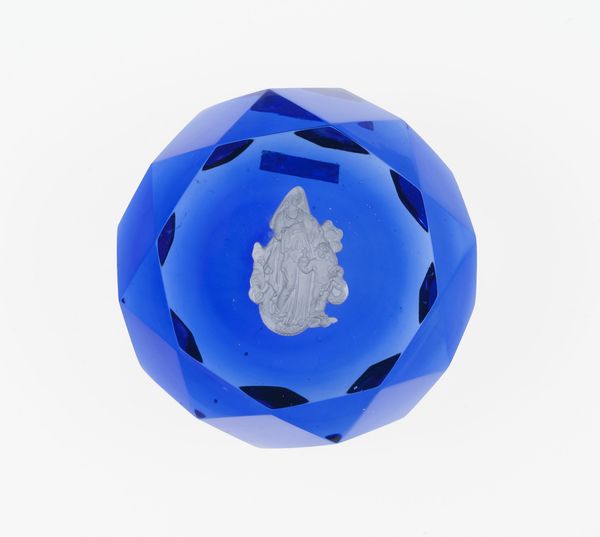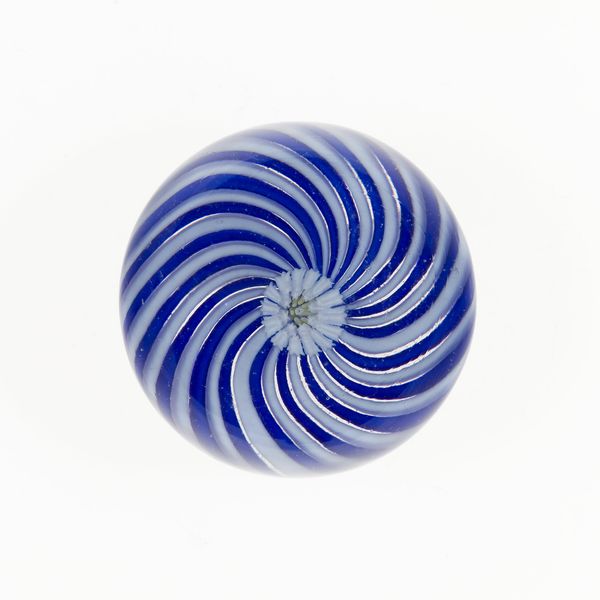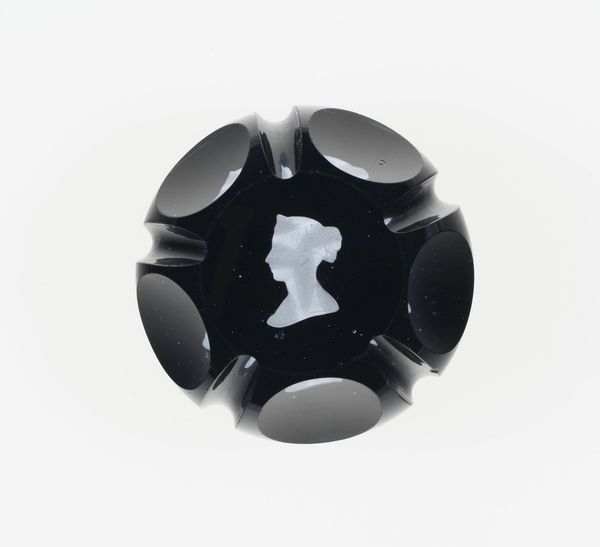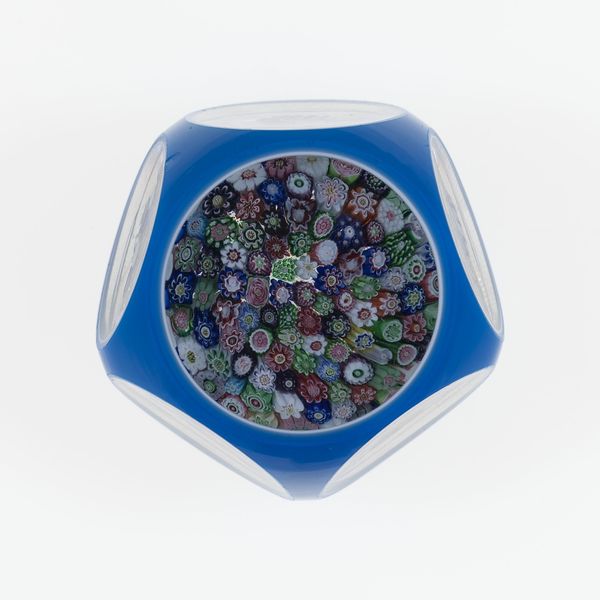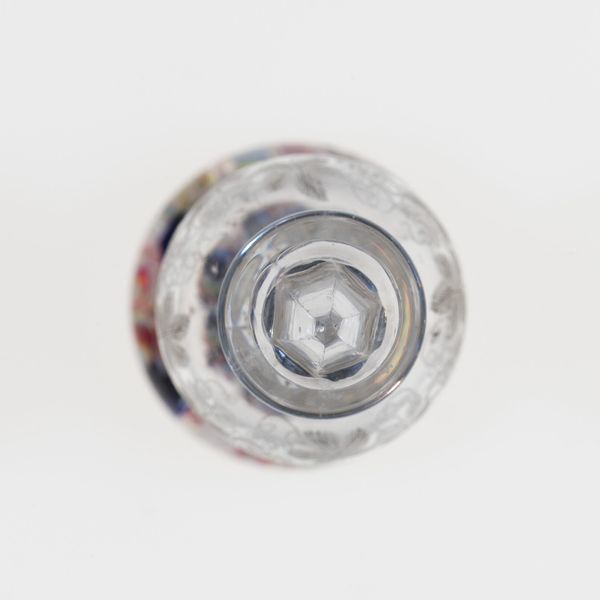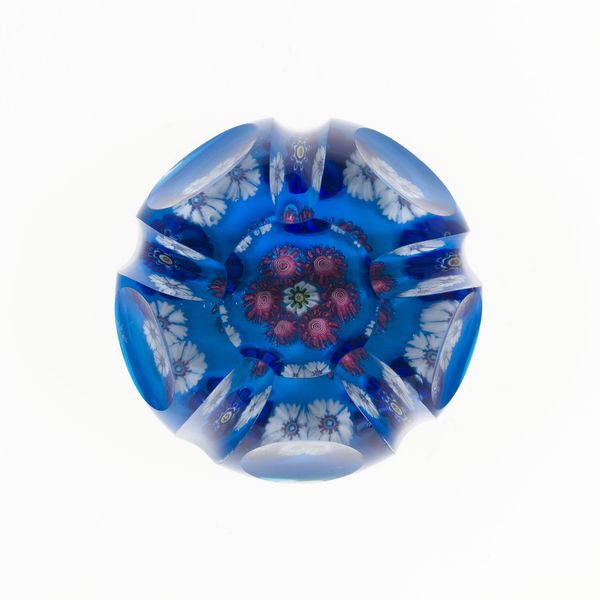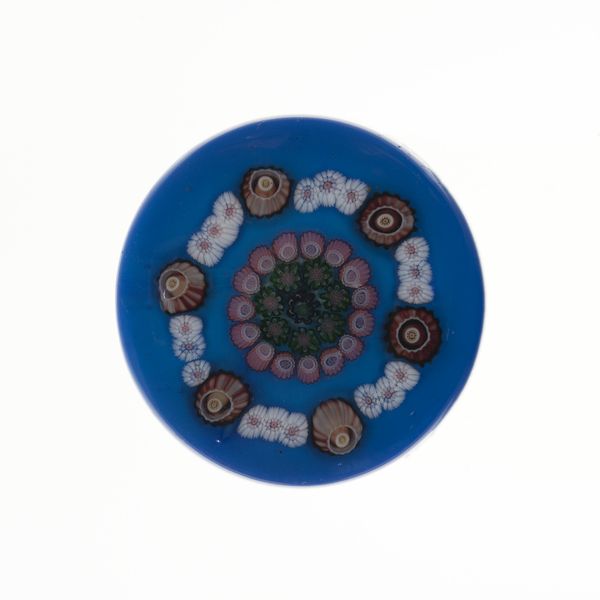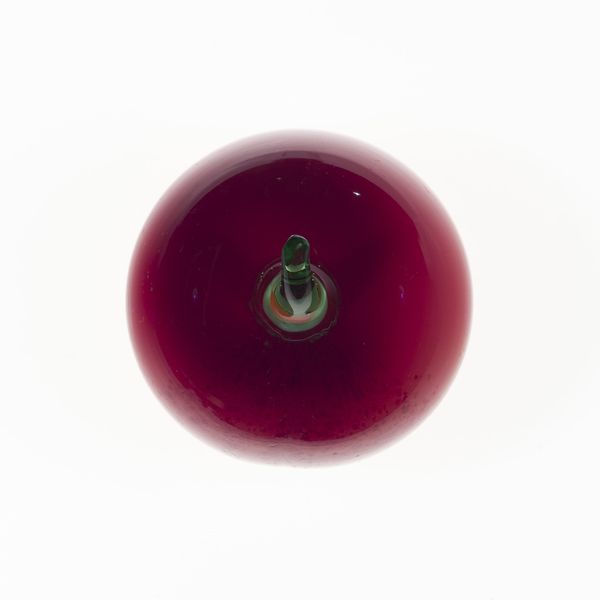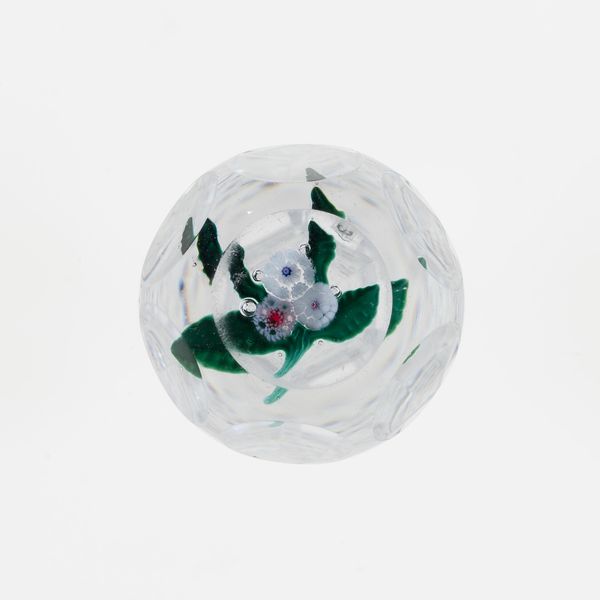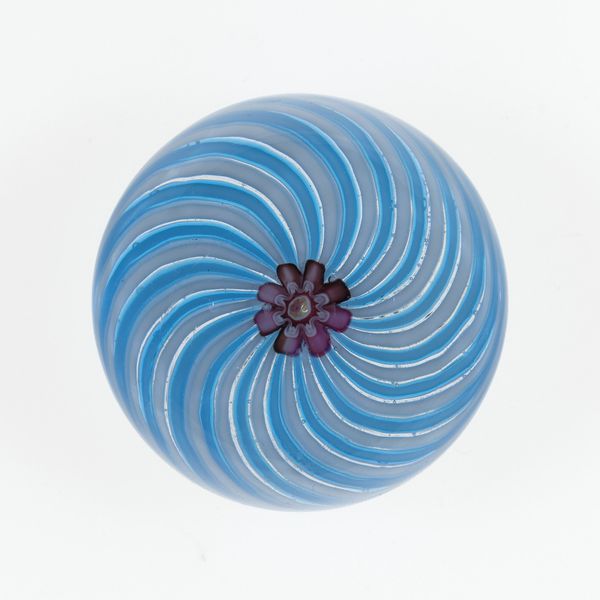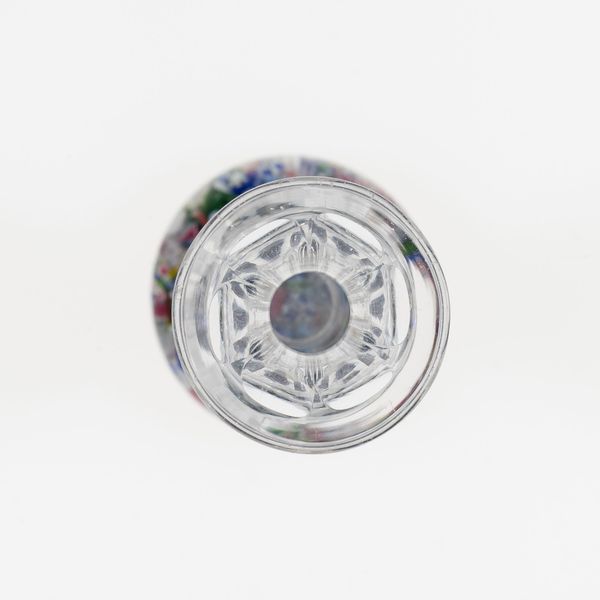
glass, sculpture
#
glass
#
sculpture
Dimensions: Diam. 7.3 cm (2 7/8 in.)
Copyright: Public Domain
Editor: Here we have a glass sculpture, a paperweight from the mid-19th century by the Clichy Glasshouse. The intense blue is so striking, almost hypnotic. What stories can this little object tell us? Curator: It’s a beautiful piece. Consider the role of paperweights during this era. They became popular during a time when letter-writing and desk work were increasingly common among the middle class. They’re functional, yes, but they also became status symbols. Editor: So, they weren't just for holding down papers? Curator: Precisely. They signified access to literacy and the rise of administrative work. Glassmaking itself was becoming more industrialized, and these weights showcase a controlled display of artistry accessible to a broader public than fine art sculpture. They speak to democratization of art and culture through commodity. Editor: I see... it’s a tiny revolution in a sphere. The intricate design inside, does that hold any particular significance? Curator: While Clichy, and other glasshouses like Baccarat, were known for their millefiori designs - often abstract patterns - sometimes they did depict recognizable motifs. We'd need closer inspection to understand what those could represent, but given the rise of symbolism during the Victorian era, there's a high probability it may allude to something greater. What would you consider this motif representing if you saw this in a home of that time? Editor: I would probably believe that the owner was very intelligent, and proud of it. Thanks, I hadn't really thought about how an object like this could reflect social and political shifts in the mid-1800s. Curator: That’s the power of art history, isn't it? To find the big picture within the seemingly small. I wonder, if we were to make a paperweight today, what kind of symbolisms and societal references would you encase within the glass?
Comments
No comments
Be the first to comment and join the conversation on the ultimate creative platform.
